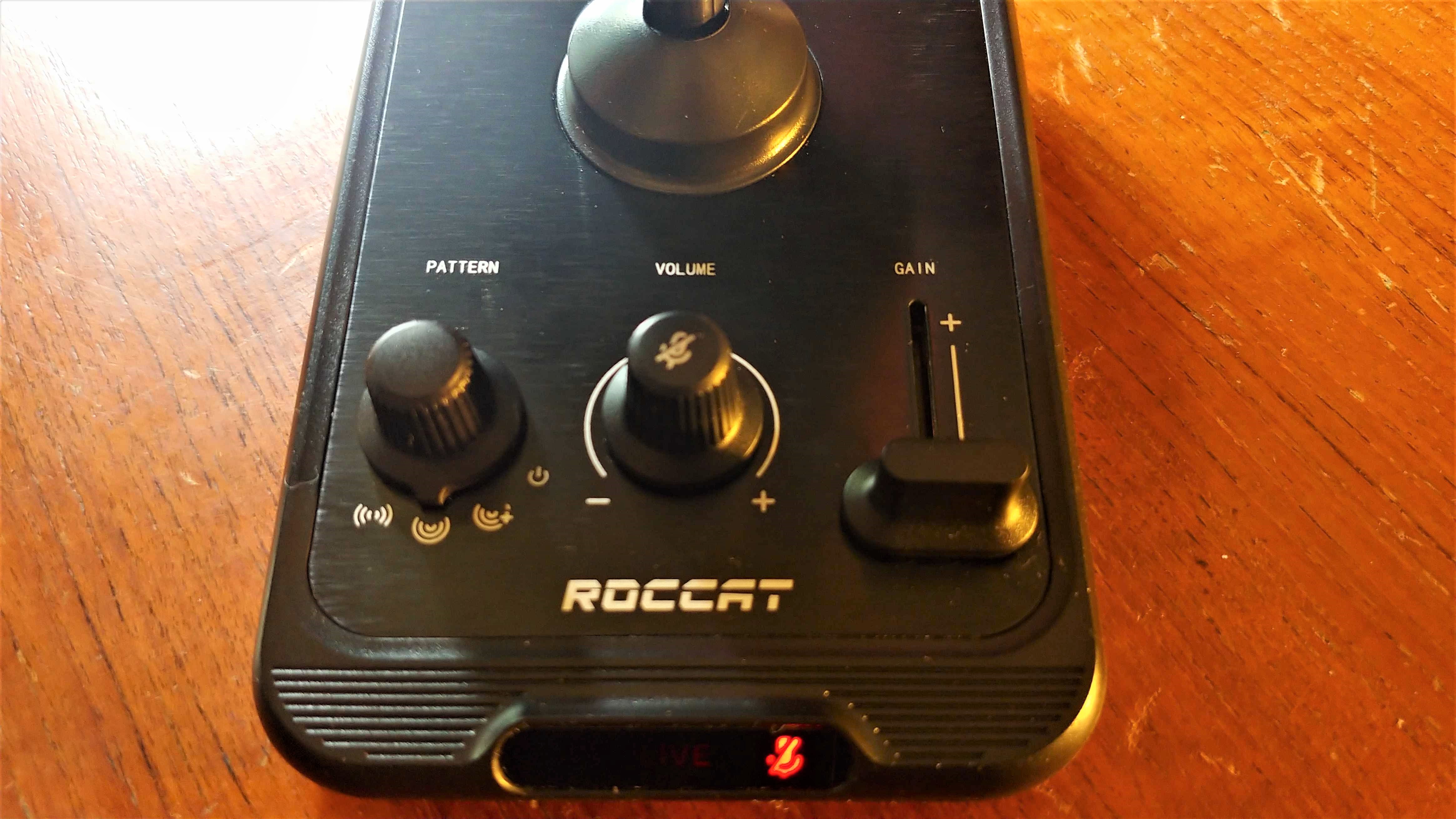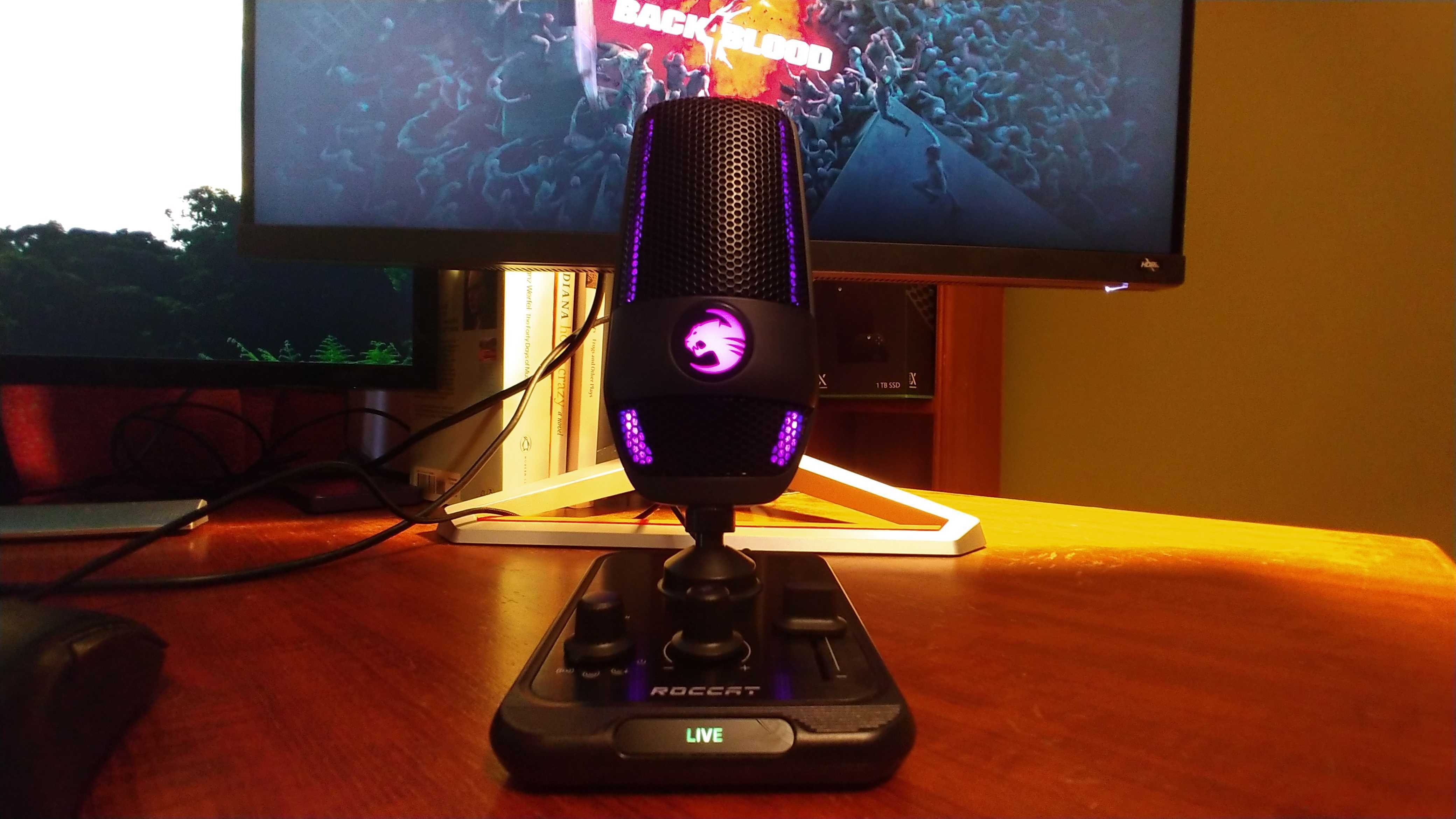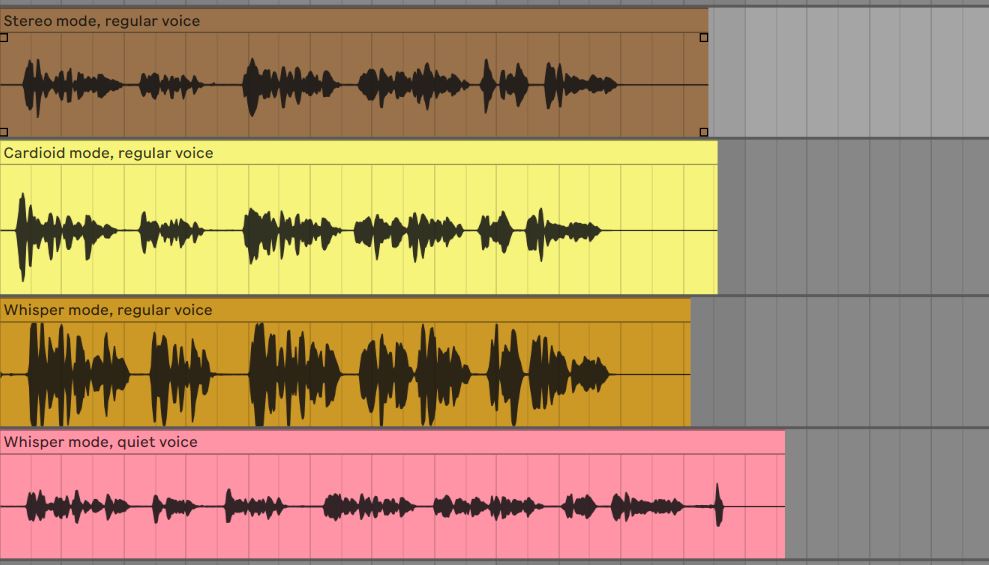Our Verdict
Its whisper mode functionality is where the novelty ends here, but the Torch boasts great sound for podcasters, streamers and players alike.
For
- Very useful 'whisper' mode
- Subtle RGB is actually useful
- Simple onboard controls
Against
- No XLR
- Weird tiny USB Type-C connectivity when docked
PC Gamer's got your back
Roccat's first stab at microphones is a successful if safe entry into the market, but it comes with some neat touches. It's a 24-bit condenser mic with onboard controls, three pattern settings, and some pared-back-but-actually-useful RGB stylings. At this price point there's a lot of competition, and the Torch manages to knock over all the usual bullet points you'd expect from a USB microphone targeted at gamers, streamers, or podcasters who don't have hundreds of dollars to spend.
About those bullet points: You just plug this thing in and away you go. There's no XLR to worry about (though some may mourn its absence) and no software, unless you want to download Roccat's Neon software to customise the RGB. There's a gain slider onboard to control the volume of your voice, a volume knob to control your PC or headphone monitoring volume (via a 3.55mm jack), and a pattern knob.
This pattern knob lets you toggle between the stereo, cardioid and "whisper" modes. The first two are likely familiar to you: stereo is for singing, playing, flute solos, and provides a more panoramic input variant. Cardioid is primarily for solo voice and is what you'll probably use most of the time when streaming.
Or, you might end up maining "whisper," which is Roccat's gift to budding streamers or gamers who need to keep quiet for sleeping babies or irritable housemates. It's designed to pick up your voice with volume and clarity even if you're—you guessed it—basically whispering. Each of these modes is colour-coded with RGB, so if you're in the habit of switching between them, that should help avoid any awkward mistakes.

Directional pattern: Cardioid, stereo, 'whisper'
Sample rate: 48kHz
Frequency response: 20Hz-20kHz
Connection: USB-C
Price: $99 / £89.99 / AU$149.95
The base station is definitely a boon, but if you'd prefer to have the mic attached to a stand it's a matter of unscrewing it and using the included long USB Type-C to USB Type-C cable (otherwise, weirdly, you need to use a tiny Type-C to Type-C cable to connect the mic to the base station, even when you've got it screwed on).
There are two mute options on the Torch: you can either press down the volume knob, or else there's a contactless toggle at the top of the mic. This contactless toggle has two levels of sensitivity or it can be switched off, and at the highest level of sensitivity you can wave your hand roughly four fingers above the unit to make the switch. Thankfully, your head or your hair isn't going to affect it, though if you're prone to gesticulation you may want to leave it off.
The whisper mode is actually really neat: In our testing, using our regular speaking voice, the volume is at least doubled. When speaking just above a whisper, the volume is roughly on par—a tad below—than with the regular speaking voice level using cardioid or stereo, as per the image below.
Keep up to date with the most important stories and the best deals, as picked by the PC Gamer team.
Note the gain level is the same for each:
You could probably achieve the same effect by some fiddling in OBS or other software, but with the Torch it's a simple toggle—which is super convenient—and it has an immediate, noticeable effect on the input level.
That mode arguably has a narrow, potentially ASMR use case, however, and it's likely that most users will opt for cardioid if they're streaming. There's nothing to complain about here: as you can hear in the samples below, the cardioid mode does eliminate much of the ambience of my testing environment. At the upper reaches of the gain slider I did pick up some slight technology hum from the other gadgets on my desk, but that disappeared as soon as I picked it up (and would do so similarly, if attached to a boom arm).
Check out my samples (and apologies for the loudness of "whisper" mode, but it proves that it works).
The stereo mode is a decent option if you're podcasting with a friend or two but only have one mic. If someone whips out a guitar for whatever reason (we all know that guy) it'll pick that up beautifully too, for better or worse. But as you'd probably expect, the stereo mode also picks up a lot of unwanted environmental noise (my office is near a road and no window or curtain can block traffic noise—you'll hear it softly in the sample above).
Given that the Torch shares the same specs as most of the competition in its price range, the results are predictably competent, even great. Arguably, what helps this particular unit stand out is its bloody-handy whisper mode.
The Torch is a competent and feature-rich microphone from Roccat, with its easily accessible onboard controls, touch-free muting and whisper mode all doing much to recommend it. Hell, given that some mics at higher price points only offer one pick-up pattern, you're getting a lot here.
The build quality feels sturdy, though I do worry that over time, the in-built pop filter—the soft mesh beneath the main metal mesh—will accumulate dust that might be hard to retrieve. That's speculation though; what you're getting out of the box is well fit for streamer, podcaster and Zoom chatterer alike.
Its whisper mode functionality is where the novelty ends here, but the Torch boasts great sound for podcasters, streamers and players alike.

Shaun Prescott is the Australian editor of PC Gamer. With over ten years experience covering the games industry, his work has appeared on GamesRadar+, TechRadar, The Guardian, PLAY Magazine, the Sydney Morning Herald, and more. Specific interests include indie games, obscure Metroidvanias, speedrunning, experimental games and FPSs. He thinks Lulu by Metallica and Lou Reed is an all-time classic that will receive its due critical reappraisal one day.



